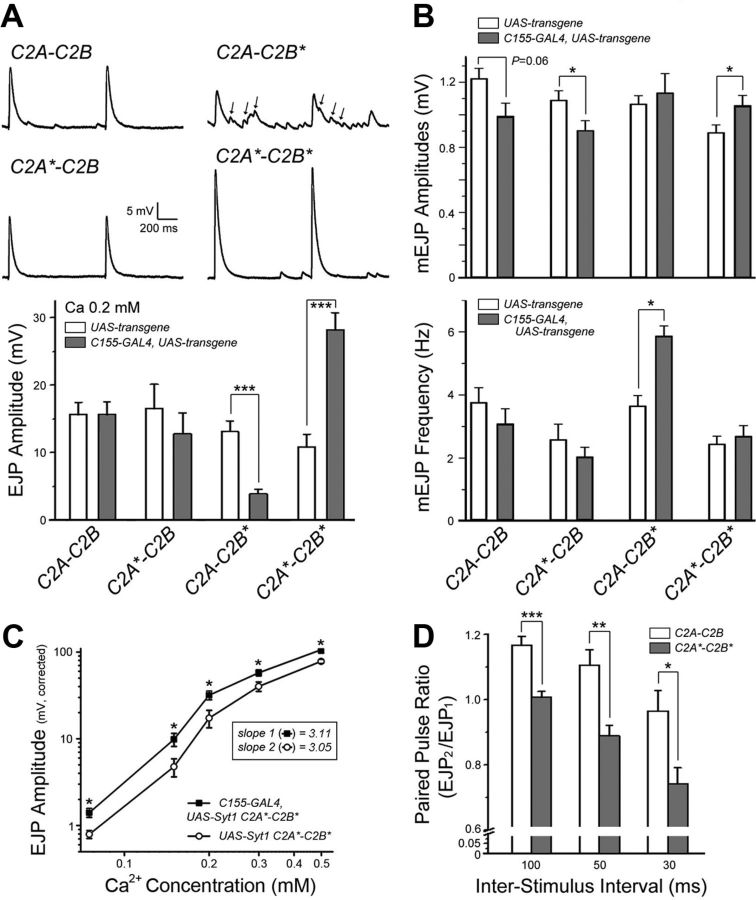Figure 7.
Interplay between endogenous and transgenic Syt1 constructs on evoked synchronous release. A, Top, Representative traces of two consecutive EJPs recorded in the presence of low [Ca2+]o (0.2 mm) are shown for wild-type larvae overexpressing the indicated transgenic Syt1 constructs. Calibration: 5 mV, 200 ms. Asynchronous release events during stimulation are indicated with arrows. (Bottom) Mean eEJP amplitude is summarized for the indicated genotypes. Animals carrying each transgenic construct without a GAL4-driver (white) served as controls for comparison with the same transgenic constructs driven by elavC155-GAL4 (gray). B, Mean mEJP amplitude (top) and frequency (bottom) are summarized for the indicated genotypes. A, B, Number of NMJs examined (control and transgene expression): C2A-C2B, 7 and 8; C2A*-C2B, 8 and 5; C2A-C2B*, 11 and 8; and C2A*-C2B*, 10 and 11. C, Log-log plot for eEJP amplitudes at varying [Ca2+]o is shown for animals overexpressing the C2A*-C2B* construct (■) and its transgenic control without a GAL4-driver (○). The slope values calculated from a linear fit of the first three data points (0.075–0.2 mm [Ca2+]o) are indicated in the box. Number of NMJs examined (control and transgene expression): 7 and 11 at 0.075 mm [Ca2+]o; 7 and 11 at 0.15 mm; 6 and 11 at 0.2 mm; 6 and 10 at 0.3 mm; and 6 and 9 at 0.5 mm. D, The ratios of eEJP responses in a paired-pulse stimulation paradigm are displayed for wild-type animals overexpressing the C2A-C2B (white) or C2A*-C2B* (gray) constructs. Number of NMJs examined (C2A-C2B and C2A*-C2B*): 8 and 6 at 30 ms interval; 8 and 7 at 50 ms; and 8 and 7 at 100 ms. A–D, Data are mean ± SEM. ***p < 0.001, **p < 0.01, and *p < 0.05, Student's t test for control (UAS-transgene) versus neuronal expression (C155-GAL4, UAS-transgene) (A–C) or for neuronal overexpression of C2A-C2B versus C2A*-C2B* (D).

